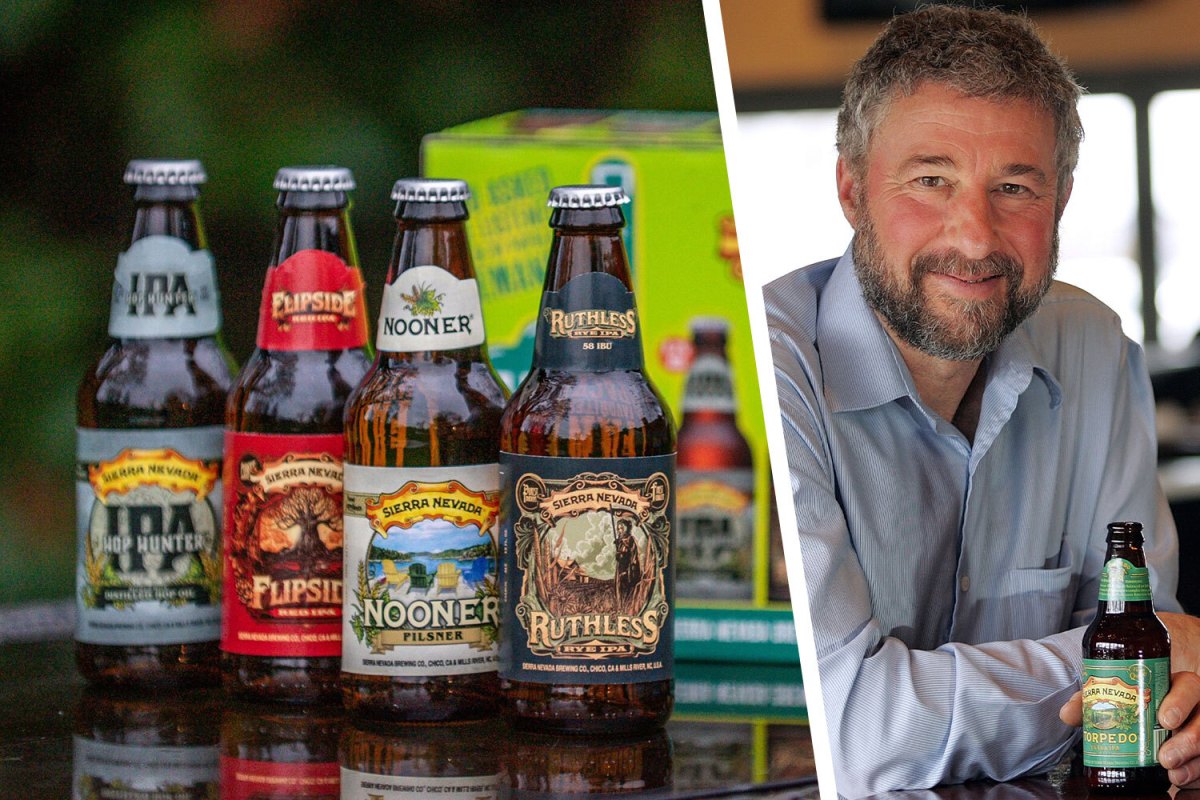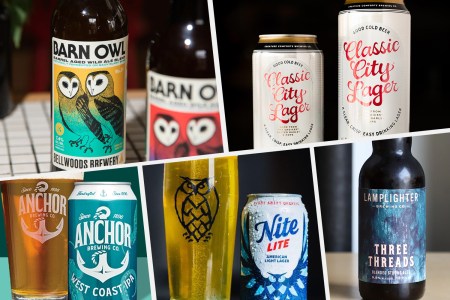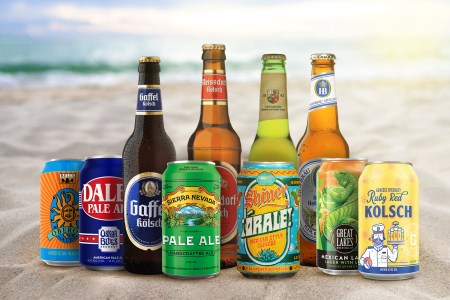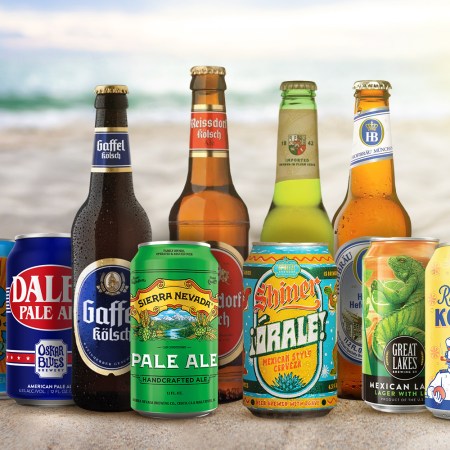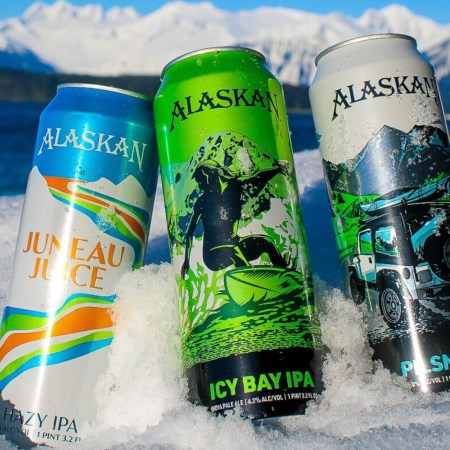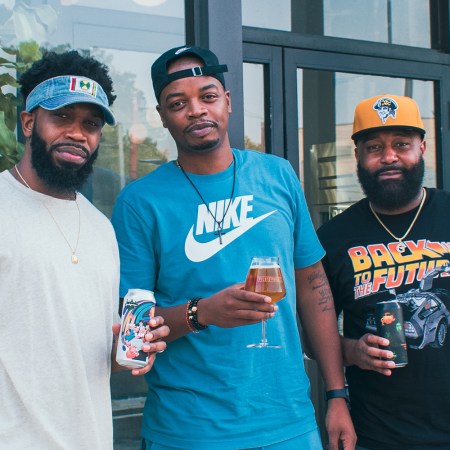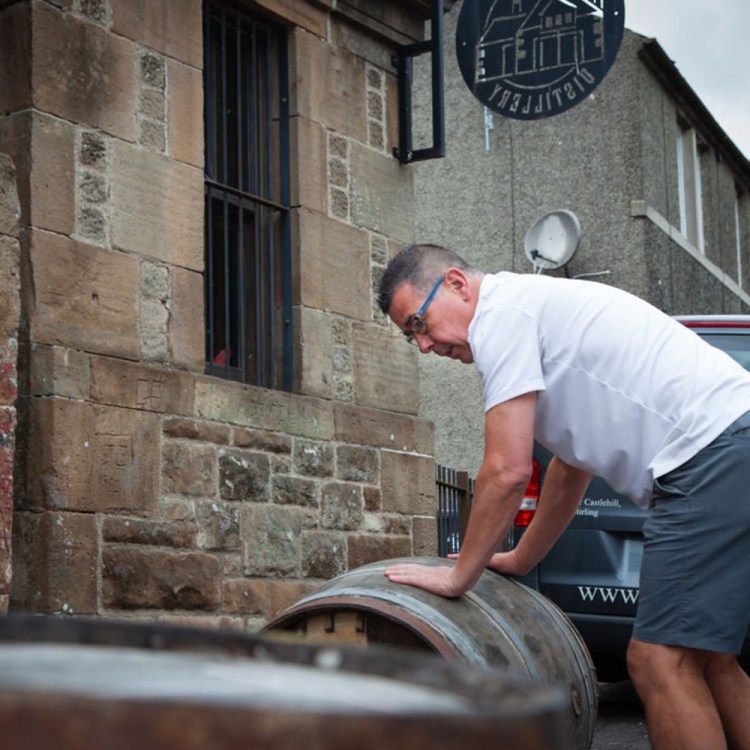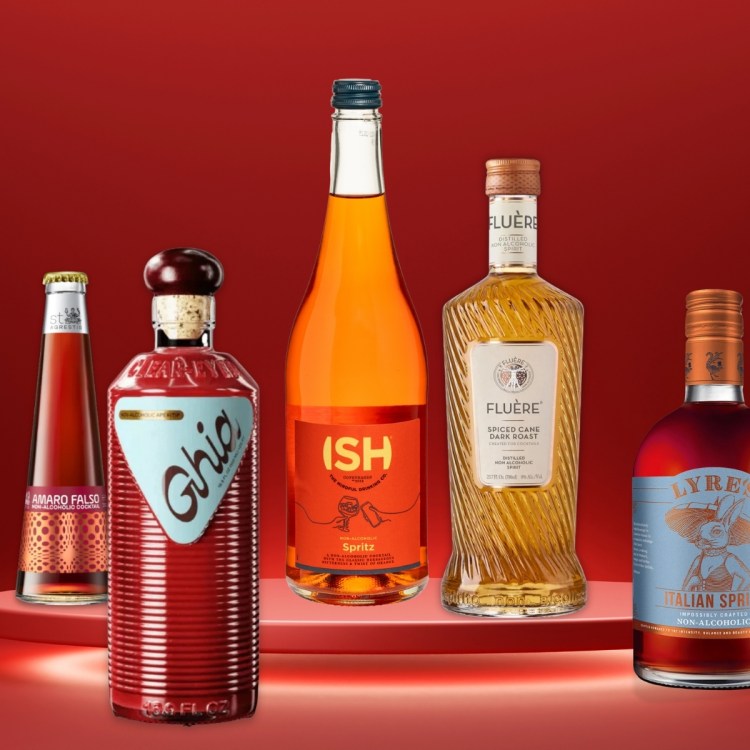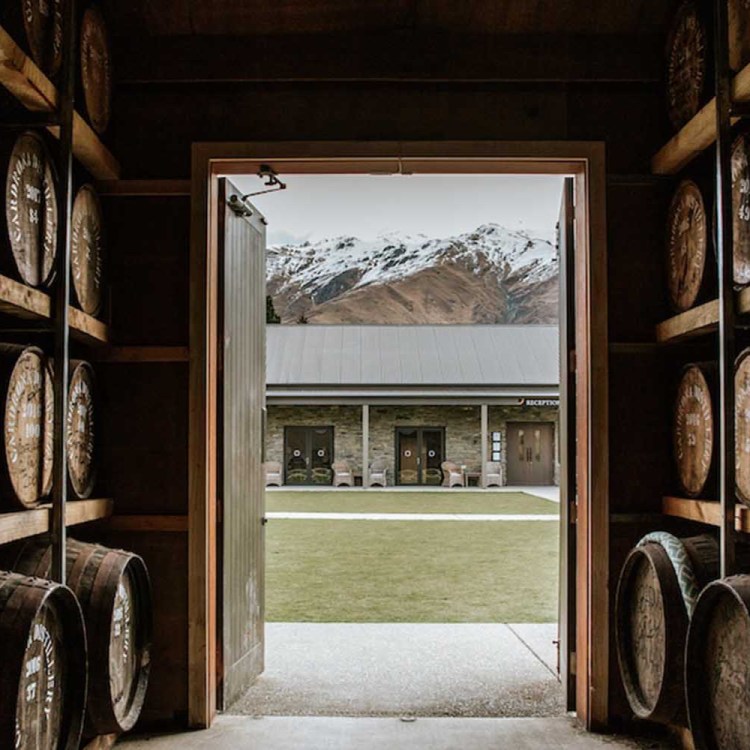When you’ve been brewing beer for over 40 years, as Sierra Nevada founder Ken Grossman has, you tend to accumulate a pretty massive roster of past and present offerings. Beers come and beers go, but some develop a large, vocal fan base that relentlessly demands to know when they’re coming back. Enter the Fan Favorites Pack.
To satisfy those thirsty fans, Sierra Nevada is bringing back four of its most well-loved, frequently requested retired beers as part of a limited-edition variety pack. The pack includes the brewery’s Hop Hunter IPA (6.2% ABV), Ruthless Rye IPA (6.6% ABV), Nooner Pilsner (5.2% ABV) and Flipside Red IPA (6.2% ABV). It’s the first time Sierra Nevada has brought beers out of retirement for a variety pack like this — but, Grossman hints, it won’t necessarily be the last.
We caught up with the craft beer pioneer to get the scoop on the Fan Favorites pack as well as his take on the future of the craft beer industry as a whole. Check out the conversation below.
Craft Beer Is Doing the Unthinkable: Mimicking Macro Beer
From the rise of the light lager to retro packaging, microbreweries are pulling inspiration from Big BeerInsideHook: Tell me a little bit about the decision to bring back these fan favorites and how it came to be.
Ken Grossman: Well, we’ve talked about this kind of a thing for quite a few years. We get lots of consumer feedback, so social as well as just direct mail and email to the brewery, about some of the brands that we have stopped producing. And so we’ve had repeated requests for all these beers, and we just decided we’d put them together in a variety pack and bring back some of our loved but displaced children that we’ve brewed over the years.
These beers are coming back as part of a limited pack. Have you given any thought to possibly bringing them back permanently?
At this point, no. We’ve given thought, but at this point I don’t think we have any plans to do any permanently, unless we get overwhelming feedback, in which case, anything’s possible.
How do you think that these classic IPAs fit into the broader IPA landscape nowadays? It seems like everybody’s going hazy these days. What do you think about how these IPAs specifically fit in today?
They’ve got their own real unique distinctive character with these beers, rye and distilled hop oil. And so from a wide range of what IPAs can be, I think we’ve covered so many styles and we’re still enjoying to drink a lot of styles, hazy and not hazy. So I think giving the drinker options as far as how they get their hops delivered to them, whether it’s with fresh hop oil or with different grains that accentuate the flavors of hops as well as other flavors, I think it just adds to the enjoyment. I was just at a brewer’s retreat this last weekend and tasted lots and lots of hazy and non-hazy beers, and all enjoyable on their own merit.
Absolutely. Is there one of these beers that you’re personally most excited to be bringing back, out of all of them?
Sort of like kids, I don’t have any one that I would say I really favor over the other. I do love the Ruthless Rye. It’s really a great beer. Hop Hunter is great. So I think they all have their own unique attributes, and I’ve drunk them all many times over the years. We’ve brewed them, and I certainly have a fondness in my heart for all those flavors and unique beers.
What do you think it is about these beers, specifically, that continues to resonate with people? You’ve been getting requests constantly to bring them back. What would you say it is that continues to sort of speak to people about these beers?
I don’t know that a drinker would be telling us to bring back all four of them, but certainly there are drinkers who have their personal favorites, and whether it was that they enjoyed it or had fond memories during some period of their life when they were doing something, and they think back to those days…Beer has the ability to transport people back in time and to moments and places and conversations. And so I think there’s some of that that happens when you have a fond memory of a beer. It might have been associated with a fond memory of an experience, so I think they sort of go hand-in-hand, that whenever you were consuming those beers when they were first out, definitely had some a meaning for you, or you fell in love with the beer and now you can’t get it. So I think there probably are a variety of reasons why people reach out to us to bring back old favorites or beers that they enjoyed. I think part of it will probably come down to the experiences they had when consuming those.
Do you have any plans to bring back any other fan-favorite beers later on down the road if this limited pack goes well, maybe make it a recurring thing?
We do. We were actually just on another call for this one, where we’re talking about some products that we’ve made in the past that may come back in some fashion in the future. I would say we’ve got a large stable of beers we’ve produced over the years. There were some years we’ve produced a hundred different beers, and so we’ve got a pretty big library of recipes and beers that we perfected over the years, and a lot of them would certainly be fun to bring back and let them shine again.
What’s the general decision-making process for when you’re trying to decide whether to remove or add a beer to your lineup? What’s the deciding factor that usually determines that kind of thing?
I think the consumer reception and velocity certainly is probably the main driver. If a brand is growing quickly, and we’re getting lots of positive feedback, I think that would certainly help ensure that it stays in the market longer. And, conversely, if it’s a brand that’s sort of languishing and sales have not been increasing, then we’ll take a look at it. The retail environment today has got a limited amount of shelf space. And so when we want to introduce something new, and people’s tastes change, trends change, sort of whole styles seem to shift a bit. We started out as a strong West Coast IPA producer, and that sort of started to morph a little bit into different styles. West Coast IPAs became popular, lighter ones, lower color, beers that would maybe let the hop shine a little bit more, less malt impact and more hop impact. And so the styles, they undergo a natural shift, I think just based on a bit of consumer preference and of innovation on the brewing side. So for us, if the brand is resonating well, then obviously it’ll stay. If it’s one that we want to swap out for something that we think is maybe more appropriate for the time, then we’ll swap it up.
We Tasted and Ranked 32 of the Best Beers for Summer
You can’t go wrong with these in your coolerSort of a broad question, but what do you think has been the biggest change to the craft beer industry since you first started? Obviously, there have been many changes over the years, but what would you say is the biggest one that stands out to you the most?
Well, when I started, there were 38 brewing companies in America. [laughs] Now we’ve got 9,500. That stands out as being a pretty big shift in my career. Again, I think the consumer knowledge base of beer and brewing has dramatically shifted. When I started, people didn’t know what hops were. They didn’t understand how beer was made really, short of a few people who maybe took tours of breweries and tried to learn. But overall the consumers were pretty naive about how beer was made and the wide range of beers that are available. Today, the consumers are super educated. The internet has certainly helped with that, just the proliferation of brewpubs and breweries.
A lot of people now visit those and get a much greater education about beer and brewing. The average — I wouldn’t say the average, but the knowledgeable consumer today probably knows more about beer than I did when I started brewing back as an early, young, aspiring brewer. I was learning about beer styles, but back then there was no internet, so for me to learn about beer styles, I had to travel to Germany or to England or to Belgium and experience a lot of those in their home country. Today, we brew all those styles in America, and you can go to any pub and have 20 or 30 styles of beer, fresh from the brewery. That wasn’t available back when I first started. The import beers that would be on the shelf were old and not necessarily representative of how they would have been in their home country.
What do you think the future holds for the craft beer industry? I know that people have been talking about hard seltzers and other non-beer options coming in and sort of exploding in recent years. What are your thoughts on where drinking habits for people are gonna be five, 10 years down the road?
Well, drinking habits certainly have shifted. COVID was part of that, but even before COVID, there was starting to be a demographical shift in both alcohol consumption in general. Alcohol consumption has been dropping for quite a few years. And then there’s been shifts between distilled spirits and wine and beer. A little bit cyclical over time. Wine’s had its heydays, and spirits now is having a little bit of a heyday and beer is fairly stagnant. There’s not been a lot of growth in the beer industry for a number of years. And things like seltzers and hard cider and hard tea and those kinds of beverages certainly have proliferated the last few years and have taken quite a bit of share just out of the whole beer segment. But they’ve sort of had their day now. Seltzers are declining again, and as I said, spirits and spirits-based RTDs are starting to eat some of the lunch of the seltzers and malt-based products.
Do you think nostalgia comes into play there? Like talking about these fan-favorite beers again, is there sort of a nostalgic element to people wanting to go back to the way that they were drinking before everything got complicated?
Yeah. I think certainly some consumers probably feel that way. But a lot of the consumers that are newly 21, they don’t have any of that history. And if you were raised drinking soda pop, sweet kinds of carbonated beverages, it’s easy to see how they would be attracted to a sweet mocktail or cocktail kind of beverage with alcohol in it that was more aligned with what they were used to as a soda consumer or Gatorade or any of the ready-to-drink beverages that they might have grown up on.
Well, beyond this fan-favorites pack, what’s next for you?
We’ve got lots of stuff in the pipeline. So we’ve just recently launched Hop Splash, which is a non-alcoholic, hop-infused water, which is quite delicious and gives you that hop hit without the alcohol or any calories or carbs. So we’ve got it going into the market. We’ve got some more flavors of that coming, some with some natural juices. We’ve got an NA line that we’re just launching right now, so we’ll have a couple of non-alcoholic beers in the market starting towards the end of this year. So those have been fun to play with. We’re tooling up to make a variety of NA products.
That’s a trend that was in Europe for quite a bit longer than we’ve had here in the US. Not that NA beers haven’t been here, but NA beers in America are about 1% of the US beer market, whereas you go to Germany, you go Spain, they’re about 15% and growing strongly. So people still want to drink at lunch, but not necessarily have alcohol. And the closer you can get to producing one that tastes like real beer, the better. So we’ve been working hard on that. In the past, most of them have not been great, and then so there wasn’t really a reason to drink an NA beer over iced tea or something. So if you can produce a great-tasting NA beer, which we have, that would be an alternative for certain occasions, and for people who don’t drink alcohol at all.
Definitely. Well, I think that’s all I’ve got for you, unless there’s anything else you want to make sure that you mention before I let you go?
I’m looking forward for this pack to come out, and then be able to sample some of my very old favorites. I’ve been tasting some of them in R&D as we’re developing them. Even though we’ve got recipes, hops change, malts change, all those things evolve over time, so we just gotta make sure we get the flavor matched to the way they were when we brewed them a few years back.
Every Thursday, our resident experts see to it that you’re up to date on the latest from the world of drinks. Trend reports, bottle reviews, cocktail recipes and more. Sign up for THE SPILL now.
